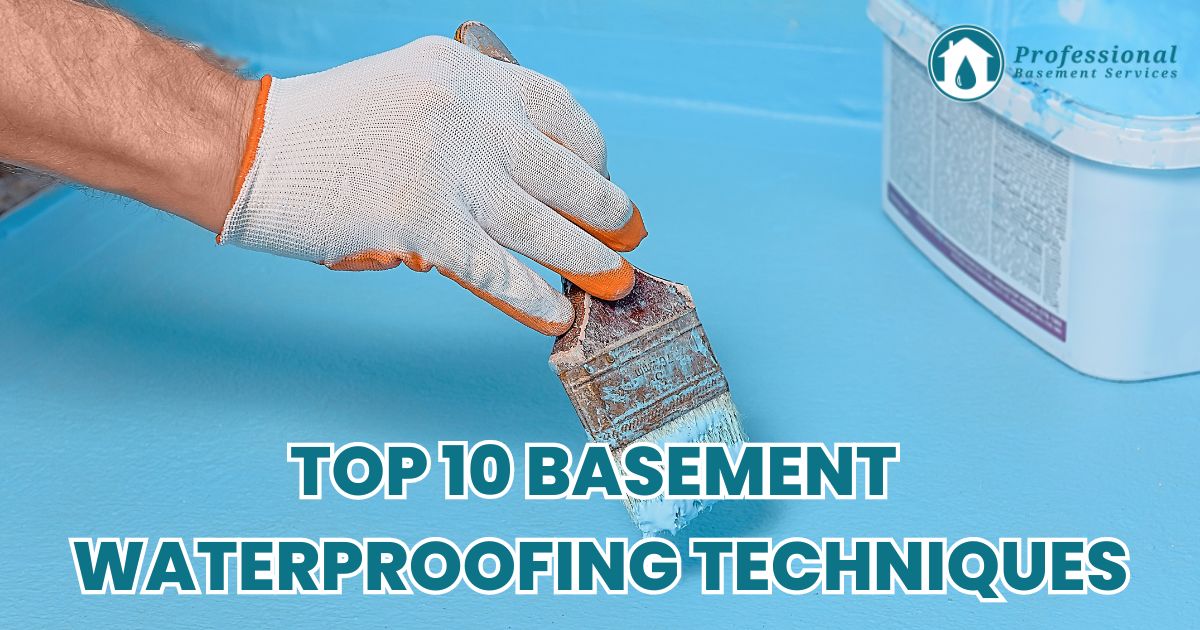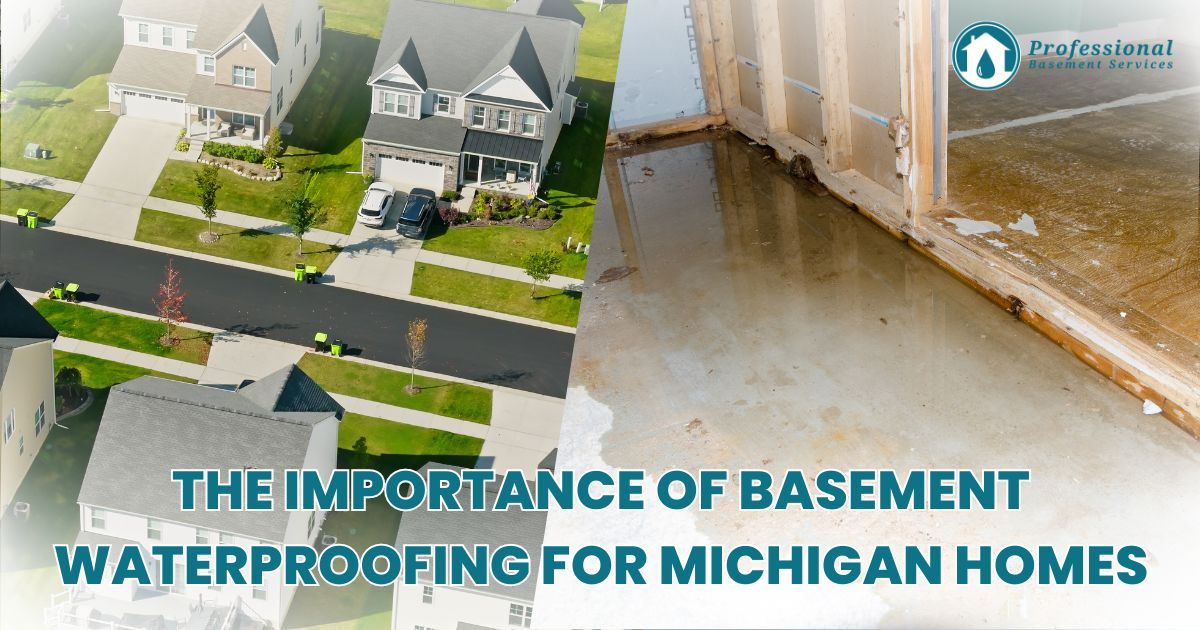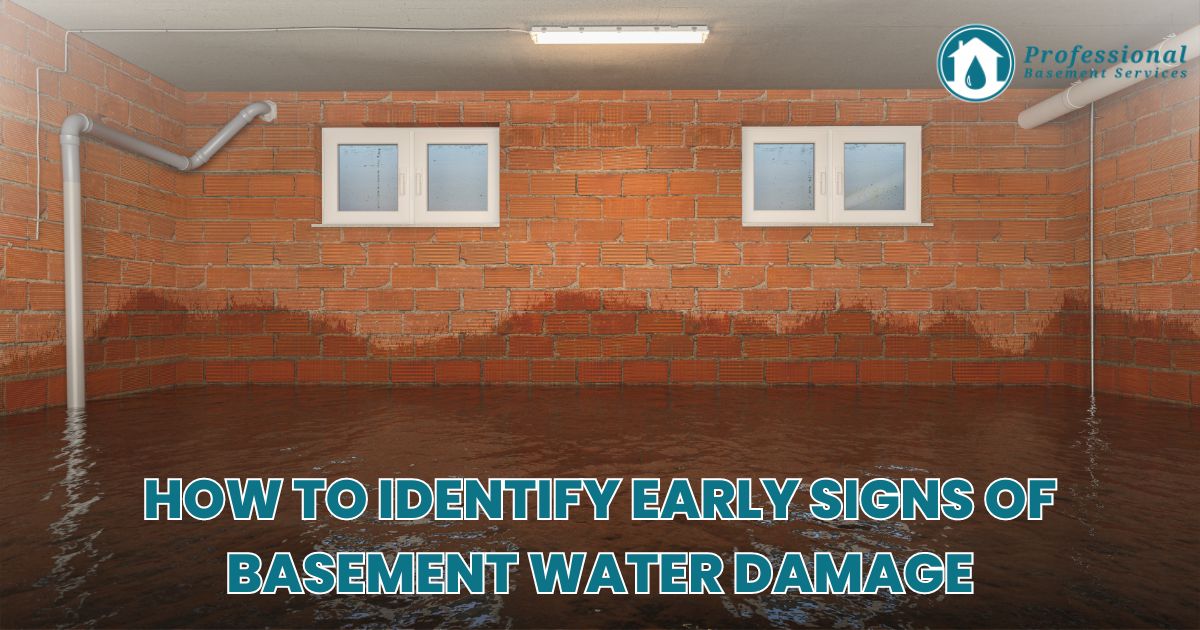How to Find The Source of a Basement Water Leak.
Imagine coming home from a night out and going down to the basement for some real relaxation. You flop into the couch and go to turn on the TV when you notice it… a water stain. You think, “that wasn’t there yesterday.” As you investigate you find there is a whole lot more than a new stain, but where is the water coming from?
This can be a frustrating experience as a homeowner. You are not alone. Thousands of homes face basement waterproofing issues every year. Not being able to find the source of a leak in a finished basement is a common problem but one that demands action. Professional Basement Services is here to help you get to the source of your leak and identify the right solution.
Finished Basement Leak – Local or Regional?
Before we do anything else, we need to know whether the leak is local, regional, or generally everywhere. By identifying the extent of the leak you will be able to narrow down possible causes.
Local Leak – Limited to a specifically defined area.
Regional Leak – Involves an entire wall, two walls, or even the entire basement.
Identify Your Foundation Wall Type
The next step to finding the source of your finished basement leak depends on the type of foundation your home has. Your foundation is made up of your basement walls. There are three primary types of foundations:
- Block walls
- Poured walls
- Stone walls
Each wall type has unique characteristics that give us clues as to where to look for common water problems.
Block Wall Leaks
Localized:
With a block wall a localized leak is usually caused by a hole through the wall, such as a pipe inlet (water, electrical, sewer or septic). It also can be under a window, caused by a poor seal or water over the sill.
Regional:
A regional leak in a block wall is occurring most often from the bottom layer of blocks. As water infiltrates the porous blocks or enters through cracks in the joints, it pools up in the block cavities and eventually leaks out onto the floor through the bottom blocks or the first horizontal mortar joint.
Poured Wall Leaks
Local:
Diagnosing a poured wall leak is pretty straight forward. A localized leak is almost always from a wall crack or a pipe inlet. By the way, a basement will never (okay, 99.9% of the time) have just one crack, although many cracks never leak.
Regional:
Regional leaks in a poured wall basement occur at the cove, where the floor meets the wall. The cove is a cold joint, where separate pours of cement meet (the footing, wall, and floor). Because they are poured separately, there will always be a seam that allows hydro-static pressure to push water into the basement.
Stone Wall Leaks
A stone wall requires more analysis, as there are so many mortar joints and potential entry points, so a “common” diagnosis is more difficult. Stone wall basements are seldom finished, however, and observant homeowners usually know where the water enters.
I Found The Leak! Now What?
Once you’ve identified the point of entry of your water problem, the best solution is to call a basement waterproofing specialist. Talk with them about what you see and how they would recommend fixing the leak. Then schedule a time for them to come out and inspect the problem area in person.
Water can be a destructive force when not properly addressed. A small leak can turn into a disaster in a matter of weeks or even days. In order to preserve your home’s foundation and keep out the risk of a wet, damp, moldy basement; hire a reputable contractor that specializes in foundation repair and basement waterproofing. Professional Basement Services is dedicated to keeping your home safe and dry. Give us a call!





